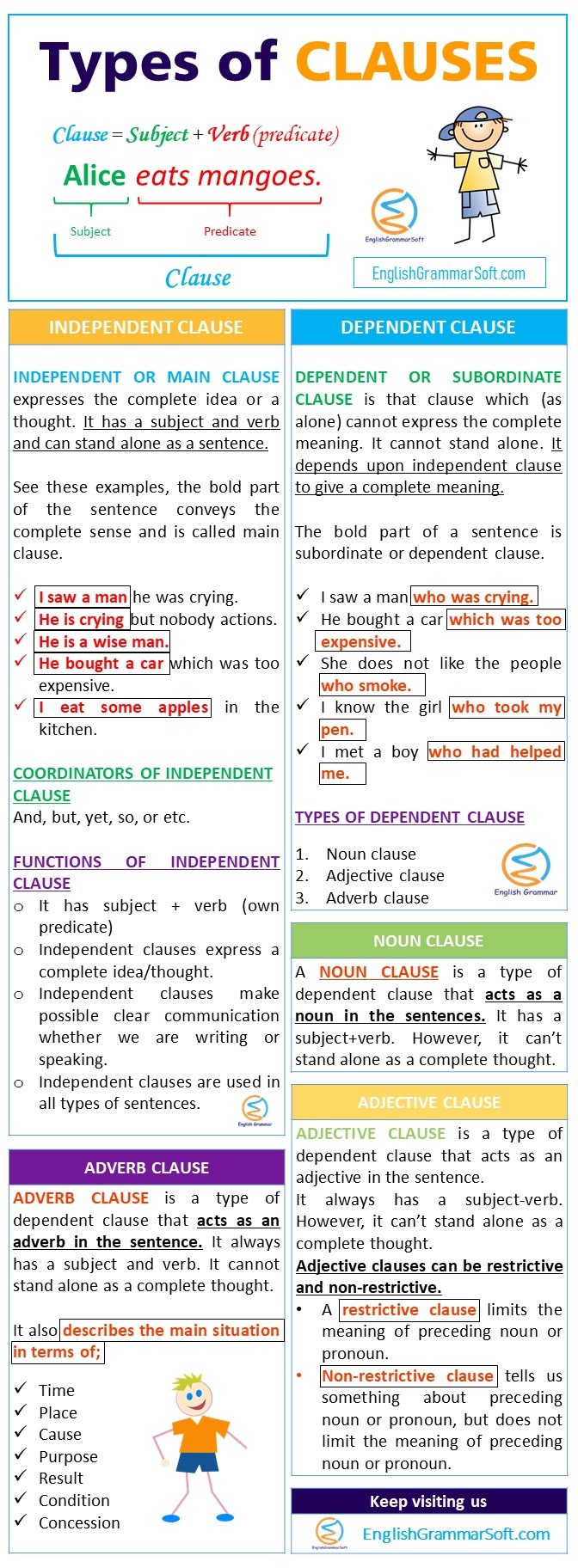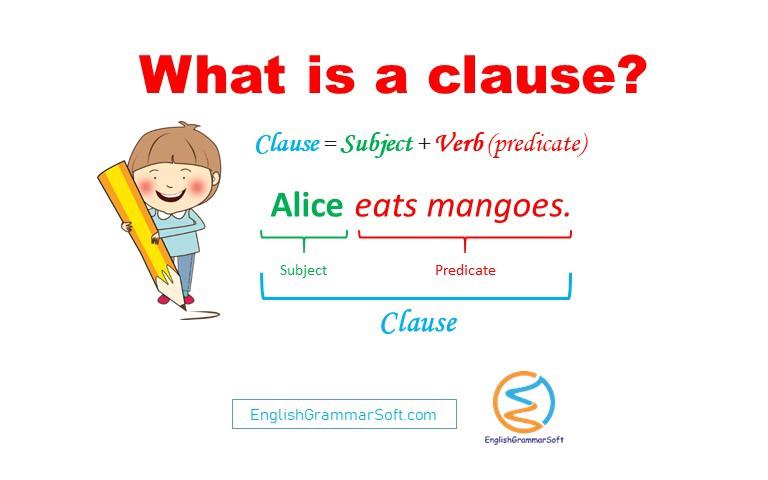

In simple sentences, there is one clause that is a complete thought.
While, in compound sentences, there are two clauses. One is an independent clause and the other is the dependent clause.
Examples
In complex-compound sentences, there are more than two clauses. One clause must express a complete thought.
There are different types of clauses. Two main types are dependent and independent clauses. The dependent clause has further types. All the types of clauses are explained here with examples.
Example
He is buying the shoes which looks very nice.
The above sentence has two clauses, “He is buying the shoes” and “which looks very nice”. The first clause expresses a complete idea and can alone stand as a sentence. Such clause is known as an independent or main clause.
While the clause “which looks very nice” does not express the complete thought and cannot stand as a sentence. It depends upon the first clause (which is the main clause) to express the complete thought. Such clause is known as a dependent clause.
Independent or Main Clause expresses the complete idea or a thought. It has a subject and verb and can stand alone as a sentence.
See these examples, the bold part of the sentence conveys the complete sense and is called main clause.
These words are used to join the clauses.
Example
He is crying but nobody actions.
Dependent or subordinate clause is that clause which (as alone) cannot express the complete meaning. It cannot stand alone. It depends upon independent clause to give a complete meaning.
It may function as a noun, an adjective or an adverb in a sentence.
A noun clause is a type of dependent clause that acts as a noun in the sentences. It has a subject+verb. However, it can’t stand alone as a complete thought.
Example
I remember what you said yesterday.
In above sentence “what you said yesterday” functions as noun.
Subordinators and identifications of noun clause.
Functions of a Noun Clause
The nine main functions of noun clause are given here.
Adjective clause is a type of dependent clause that acts as an adjective in the sentence.
It always has a subject-verb. However, it can’t stand alone as a complete thought.
Example
He wears a shirt which looks nice.
In above sentence “which looks nice” is an adjective clause.
Subordinators of adjective clause
Examples
An adjective clause always begins with relative pronoun.
Adjective clauses can be restrictive and non-restrictive.
i – Restrictive Clause
A restrictive clause limits the meaning of preceding noun or pronoun.
Example
The student in the class who studied a lot pass the examination.
ii – Non-restrictive Clause
Non-restrictive clause tells us something about preceding noun or pronoun, but does not limit the meaning of preceding noun or pronoun.
Example
The student in the class attended all the lectures pass the exam.
Adverb clause is a type of dependent clause that acts as an adverb in the sentence. It always has a subject and verb. It cannot stand alone as a complete thought.
It also describes the main situation in terms of time, frequency, cause and effect, condition etc.
i – Adverb clause in a time
It frequently starts with when, before, after, until, as soon as, since.
Example
When he won the money, he decided to buy a car.
ii – Adverb clause in a place
It shows the place in the sentence and starts with where, wherever
Example
She drove wherever she wanted.
iii – Adverb clause in a cause
It shows some cause of action. It starts with because, as, since
Example
She got a parking ticket because she parked illegally.
iv – Adverb clause in a purpose
It frequently starts with so that, in order that
Example
He drove fast as he could get to work on time.
v – Adverb clause in a result
It starts with so-that, such-that
Example
He drove so fast that he got a speeding ticket.
vi – Adverb clause in a condition
It starts with if, unless
Example
If she had not won the lottery, she would have been very unhappy.
vii – Adverb clause in a concession
It starts with although, even though
Example
Although she thought she was a good driver, she got a lot of tickets for speeding.
To know more about clauses and how to represent them, check this link.

Read also: 11 Rules of Subject-Verb Agreement & Examples